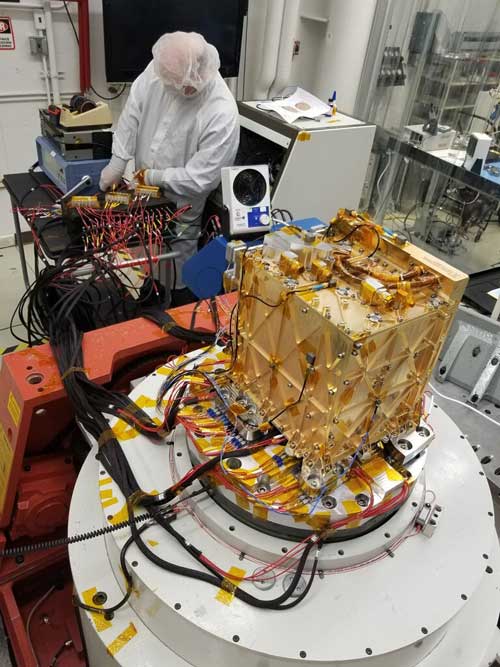
by Douglas Messier
Managing Editor
Oxygen.
It’s really important for life. Especially on a planet like Mars, whose thin atmosphere is composed largely of unbreathable carbon dioxide. Astronauts would have a difficult time surviving on the Red Planet without oxygen. And it was expensive to bring it all with them.
NASA has some good news for future Mars explorers. The space agency’s Mars Oxygen In-situ Resource Utilization Experiment (MOXIE) aboard the Perseverance rover has successfully produce oxygen on the Red Planet.
“MOXIE is the first step leading to a system hundreds of times larger to support human exploration. Operations described in this paper show that MOXIE is well on the way to fulfilling its first goal—demonstrating daytime and nighttime oxygen production during all martian seasons without any detectable difference in performance beyond that expected from the changing atmospheric density,” according to a scientific paper published in the journal Science Advances.
“The second, and equally important, goal, to inform the design of future scaled-up systems, will be met by a combination of laboratory experiments on Earth and analysis of the long-term behavior of MOXIE on Mars. Problems may arise in scaled-up systems that are not faced by MOXIE, but much of relevance to future systems has been learned from building and operating MOXIE,” the paper added.
“In seven oxygen production runs through 2021, MOXIE successfully produced ~50 g of oxygen and definitively demonstrated that it meets requirements for oxygen generation rate and purity despite design compromises demanded by severe constraints on mass, power, volume, and cost,” the paper said.
“A MOXIE-like system, scaled up several hundred times (2 to 3 kg/hour of oxygen production versus MOXIE’s 6 to 8 g/hour), could produce sufficient oxygen to launch a MAV for a crew arriving one 26-month cycle later,” the paper said. “Producing oxygen is such a critical function for human exploration that it demands prior validation in the actual Mars environment—NASA’s Technology Readiness Level 9.”

